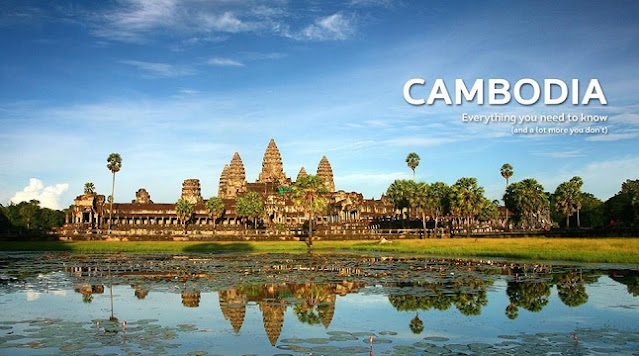Ancient Civilizations Of The World
Ancient civilizations of the world
The emergence of civilization in different parts of the world is the greatest achievement of man. As a result of the gradual improvement of civilization, human life has become easier and easier. Today's modern age has been made possible by the welfare of civilization. From savagery to savagery and from savagery man gradually became accustomed to an orderly way of life. Human beings continue to improve the quality of life through their social, economic and cultural activities. In terms of special time-period it is called civilization. In ancient times many civilizations developed in different parts of the world. Some notable civilizations are highlighted below.
Egyptian civilization
Egyptian civilization is one of the oldest civilizations in the history of the world. Civilization developed in Egypt between 5000 and 3000 BC. This civilization developed around the Nile. Nature and climate have played a unique role in the emergence and development of Egyptian civilization. The Mediterranean Sea to the north, the Nubian Desert to the south, the Red Sea to the east, and the Libyan Desert to the west. In fact, it was for the Egyptians that the most long-term, important and prosperous civilization of human civilization was started in this region. At first Egypt was divided into 40 nome or city states. King Menes was the first to establish a single state. Then about 30 dynasties ruled Egypt. Egypt first came under Greek, then Roman, and later Arab rule. The Egyptian emperors were called Pharaohs or Pharaohs. The Egyptians made great economic progress in the second millennium BC. Irrigation of lands, construction of dams, The improvement is due to the success of the drainage work.
The religion of the Egyptians was strong. They used to worship various gods and goddesses. They believed that these gods and goddesses controlled nature. In 4000 BC, an advanced writing system called hieroglyphics originated in Egypt. They used to write on a type of paper called papyrus made from the marrow of a reed or reed tree. Mathematics was born in ancient Egypt to determine the quantity of crops. Geometry arose when digging canals, measuring the length and width of the land, measuring the size and angles of the pyramid rocks. They are also the first to create a calendar.
They started counting the years in the first 365 days. The Egyptians built mummies (pyramids) to protect the corpses of pharaohs from decay. The pyramids still stand in their glory today. The name of their biggest pyramid is Pharaoh Khufur Pyramid. Geometry originated by measuring the size and angle of the stone in the pyramid. They are also the first to create a calendar. They started counting the years in the first 365 days. The Egyptians built mummies (pyramids) to protect the corpses of pharaohs from decay. The pyramids still stand in their glory today. The name of their biggest pyramid is Pharaoh Khufur Pyramid.
Sumerian civilization
Mesopotamia has Akkad in the north and Sumer in the south. An advanced civilization arose in Mesopotamia around 3500 BC, centering on this Sumer. The Asymmetrical Sumerians are the fathers of early Mesopotamia. Around 300 BC, a branch of the Semitic people settled in the Tigris Euphrates (now Tigris-Euphrates) valley. This Semitic branch of society and civilization is the home of the local Sumerians, Irrigation, above all, gives knowledge about the writing method. Although the Sumerians were a civilized nation, they were not able to build a cohesive state system. In fact, all these ancient cities surrounded by Sumer were completely independent. In every city-state, the king was omnipotent, both worldly and spiritual.
However, in the absence of a central monarchy, the states were engaged in bloody conflicts to establish dominance. The economic structure of Sumerian society was not confined to complexity but simple. Trade was the second economic source of the Sumerians. There were two types of trade, domestic and foreign. Private enterprise was encouraged in trade. The Sumerians imported blue sapphires, red stones and other stones and timber by sea and land. Exported textiles, ornaments, weapons of war, etc. The Sumerians believed in many gods and goddesses. Their chief deities were Shamas, Enlil, Ishtar, Nargal and Enki. An important contribution to Sumerian civilization was the invention of the writing system. The Sumerians invented the pictographic system around 3500 BC. They divided the year into 12 months, day and night into hours and hours into minutes. The Sumerians invented the water clock and the gold clock to determine the time of day and night. They introduce 1 day in the first 24 hours and 1 week in 7 days. The Sumerians determined the relative positions of the sun and moon and were able to determine the time of the planets. Divided day and night into hours and hours into minutes. The Sumerians invented watches and gold clocks to determine the time of day and night. They introduce 1 day in the first 24 hours and 1 week in 7 days.
The Sumerians determined the relative positions of the sun and moon and were able to determine the time of the planets. Divided day and night into hours and hours into minutes. The Sumerians invented the water clock and the gold clock to determine the time of day and night. They introduce 1 day in the first 24 hours and 1 week in 7 days. The Sumerians were able to determine the relative positions of the sun and the moon, and were able to determine the time of the planets.
Babylonian Civilization
The Babylonian civilization is one of the oldest civilizations in Mesopotamia. The Akkadian or ancient Babylonian Empire of Sumer was founded in 2400 BC. Its founder was Sargon I. King Hamburabi was the best ruler of civilization. Hammurabi was a formidable warrior, organizer, administrator, and compiler of laws. He united the divided city-state. After holding power for about 42 years (1892-1850 BC), he ruled over the whole of Mesopotamia to the Mediterranean Sea and ruled over Asia, holding the title of 'Sovereign'. During his reign not only victory but also strong central rule, The history of Babylon is known as the 'Golden Age' for economic prosperity, including law. He is known for his extraordinary talent in law making. In ancient Babylon, cuneiform writing was common.
This method was more advanced than the 'pictography' method of the ancient mission. The Babylonian language had 300 phonetic symbols. The Babylonians worshiped many gods. The sun god Marduk was their best god. The Babylonians were also advanced in industry and commerce. They have made significant contributions to the development and expansion of the glass industry. Painting, Astrology, They had incomparable skills in mathematics and ayurveda. Their knowledge of the planets and stars had spread far and wide. They calculated time with the help of sundials and water clocks. Their ideas about lunar eclipses and solar eclipses were also correct. The calculation of the decimal number system in that ancient time spread from Babylon.
Assyrian civilization
The Assyrians dominated northern Mesopotamia. The inheritance of this civilization is due to the fall of the ancient Babylonian Empire in the invasion of the Cassites. By 1300 BC, the Assyrians had conquered the whole of northern Mesopotamia. Although the Assyrians were largely influenced by the Babylonian civilization, their own contribution to the history of the civilization is no less. Impressions are gained in a fluid, global, diffused way. The Assyrians first made extensive use of the Babylonian cuneiform script. Later they also used Armenian language a lot. The Assyrian kings were also conscious of preserving the ancient heritage. King Senacheri built a huge library in his capital, Nineveh, by preserving mud discs. However, the Nineveh Library, founded by King Asurbanipal, is said to be the first library in Asia. Here 22, There were over a thousand mud disc books. Most of these are preserved in the British Museum.
Religiously, the Assyrians believed in and worshiped many gods and goddesses. Their chief deity was Asura. Then there was Ishtar's place. The Assyrians were the first to determine the degree of the circle and the latitude and longitude. Their contribution to the field of astronomy is incomparable. They discovered the first five planets and named them. Their advances in medical science, diagnostics and remedies were also significant. The Assyrians are called the Romans of Asia. The Assyrians played a similar role in spreading the Babylonian civilization worldwide, just as the Romans spread the Greek civilization worldwide.
Chinese civilization
Chinese civilization is one of the oldest and most prosperous rivers in the world. According to many, it originated in the Tarim Valley on the northwestern tip of China. The civilization developed along the banks of the Huanghe River, across the Mount Quendlung. Evidence has been found that the people who now live in northern China were inhabited by people of large size and shape even in the Stone Age. They used stone knives, arrowheads, axes and various weapons made of bone. They also mastered the method of weaving cloth and making pottery. Chinese civilization is largely based on agriculture.
The ancient people used to cultivate jab, wheat, paddy and various vegetables in the fertile areas on both sides of the Huanghe River. Kept different kinds of animals, They also knew the cultivation method of silkworm. They used it to make strong and beautiful garments. Many fragmented states existed in China until 1000 BC. They are divided by different dynasties and their reigns. In 221 BC, the division and isolation of the warring states came to an end. For the overall success of the war, the great conqueror Shihuang is called Napoleon of China. He built the 4,000-kilometer-long wall, known as the Great Wall of China, to protect the country from repeated Mongol invasions, one of the world's oldest seven wonders. The Chinese invented paper and composers in the first century AD. The discovery of gunpowder on Chinese soil before the birth of Christ and the invention of the printing press in the 3rd century AD has greatly contributed to the development of human culture and civilization. Many world-renowned scholars in China, Religious leaders and philosophers have appeared. Notable among them are Confucius, Lao-Tsu and Sinatsian. Many Chinese folk tales, folk songs and myths have earned the status of timeless literary works. Ancient Chinese physicians knew herbal and surgical treatments for various ailments and wounds. Chinese acupuncture is still practiced. The religion of ancient China was very disorganized and obscure. Certain religions were not noticed among them.
Their religious world was influenced by heavenly, natural and spiritual influences. Much of the folklore and mythology has gained the status of a timeless literary work. Ancient Chinese physicians knew herbal and surgical treatments for various ailments and wounds. Chinese acupuncture is still practiced. The religion of ancient China was very disorganized and obscure. Certain religions were not noticed among them. Their religious world was influenced by heavenly, natural and spiritual influences. Much of the folklore and mythology has gained the status of a timeless literary work. Ancient Chinese physicians knew herbal and surgical treatments for various ailments and wounds. Chinese acupuncture is still practiced. The religion of ancient China was very disorganized and obscure. Certain religions were not noticed among them. Their religious world was influenced by heavenly, natural and spiritual influences.
Indus Civilization
The Indus Valley Civilization is one of the oldest civilizations in the world. It was founded about four to five thousand years after the birth of Christ. The two main centers of the Sidhu civilization are Mohenjo-daro in Larkana district of present-day Sindh province in Pakistan and Harappa on the banks of the Irrawaddy River in Panjar. The origin of the Indus Civilization is on the banks of the Indus River, which later spreads far east and south. It is said to have spread over an area of 1.5 million square miles.
The most striking resemblance to this civilization is the Sumerian civilization. Despite the improvement of agriculture, it was an urban and commercial civilization. Many believe that the Indus Valley Civilization was more advanced and developed than the ancient civilizations of China, Sumeria and Egypt. Excavations at Mohenjodaro and Harappa have revealed improved sewerage systems and harbors. Well-designed roads, burnt bricks, stone temples, Patterns of cemeteries and educational institutions have also been found here.
The Indus Valley Civilization had a well-organized system of government and had its own hieroglyphics and writing system. Their garments included cotton yarn garments, sheets, etc. They used gold, silver, conch and precious stone ornaments, animal bones, ivory combs, mirrors, razors etc. to adorn the body. There is disagreement as to who founded the Indus Valley Civilization.
Anthropological studies have found skeletons of the Australoid Mediterranean, Alpine, and Mongoloid populations here in Proteus. According to anthropologists, the Mediterranean or Dravidian group is the originator of this civilization. The civilization is thought to have been destroyed by Aryan invasions around 1500 BC. Sheets etc. They used gold, silver, conch and precious stone ornaments, animal bones, ivory combs, mirrors, razors etc. to adorn the body.
There is disagreement as to who founded the Indus Valley Civilization. Anthropological studies have found skeletons of the Australoid Mediterranean, Alpine, and Mongoloid populations here in Proteus. According to anthropologists, the Mediterranean or Dravidian group is the originator of this civilization. The civilization is thought to have been destroyed by Aryan invasions around 1500 BC. Sheets etc. They used gold, silver, conch and precious stone ornaments, animal bones, ivory combs, mirrors, razors etc. to adorn the body. There is disagreement as to who founded the Indus Valley Civilization. Anthropological studies have found skeletons of the Australoid Mediterranean, Alpine, and Mongoloid populations here in Proteus.
According to anthropologists, the Mediterranean or Dravidian group is the originator of this civilization. The civilization is thought to have been destroyed by Aryan invasions around 1500 BC. The Mediterranean or Dravidian group is the originator of this civilization. The civilization is thought to have been destroyed by Aryan invasions around 1500 BC. The Mediterranean or Dravidian group is the originator of this civilization. The civilization is thought to have been destroyed by Aryan invasions around 1500 BC.
Hebrew Civilization
The source land of Hebrew civilization is in the Middle East. This civilization was centered on today's Palestine and Israel. Ethnically, the Hebrews were a mixed race. The Hebrews played a small role in the history of civilization in terms of diplomacy, architecture and painting. But the contribution of the Hebrews to world civilization in the field of morality and religion was groundbreaking. The origin of the original Hebrew word is in doubt. According to a common tradition, the name Khabiru or Habiru is derived from Hebrew. Hebrew means foreign, low-caste or nomadic. According to most scholars, the Hebrew tribe was in Arabia. Their first settlement was in northwestern Mesopotamia. Probably a group of Hebrews led by Abraham (a.d.) settled here around 1600 BC a.d. It led to the west. From that time on, they became known as Israelis.
Hebrew played a major role in shaping Christianity. Hebrew influences two-thirds of the Bible on creationism, the oneness of God, the Creator, the Lord, the Lawgiver, and God's position as the Absolute Judge. The Hebrews also contributed to the making of laws. Hebrew law was enacted under the influence of ancient Kenite and Babylonian law. Various sections of Hebrew law are known from the Old Testament. Hebrew literature was superior to any ancient literature of the East. The influence of religion was strong in their literature. The Old Testament is basically a collection of various literary works. The Hebrews did not contribute much to science. However, they have made some contributions in the field of medical science. In the Old Testament of the Bible, suffering is called the curse of God.
Greek Civilization
The Greeks are one of the few peoples in the history of human civilization to have enviable glory for their glorious past. The Greek name was given to the Romans. Born in Greece include the great poet Homer, Gyantapas Socrates, the unforgettable Dikpala Ectinus and Phidias of architecture, the unrivaled strategists of the political arena, Themis, Taclos, Aristides and Pericles, the historian of Erisis, the eminent astrologer, , The emergence of philosophers such as Thucydides in this Greek civilization. Its contribution in every field of art, science, history, philosophy and literature has occupied a significant place in world civilization. The contribution of Dorians and Ionians, including Akians, to the development and prosperity of this civilization is undeniable. By the year 2000 BC, they began to enter Greece from the northwest. Mikonai between 1800 and 1130 BC, The Tyrrhenians and Pills region developed into a progressive bronze civilization.
Greece was then divided into several independent states, large and small. Greek civilization and culture are inextricably linked with the city-state. This civilization developed first in the Aegean islands, in the Aegean coastal cities of Asia Minor, in Athens, then in the Greek colonies in Sicily, southern Italy. They also had many gods and goddesses. They believed that these gods and goddesses controlled their destiny. The best period of Greek civilization is the reign of Pericles in Athens, which lasted from the fiftieth century BC to several decades. During this time extreme success was achieved in various fields including science, literature, art and philosophy. Athens became the seat of this civilization. The Greeks were the first to contribute to the establishment of theater in the field of world civilization. History dates back to ancient Greece. Ales formally introduced Greek philosophy in the sixth century. Pythagoras became immortal by initiating mathematics. Hippocrates freed medicine from superstition and made it stand on a scientific basis.
Roman Civilization
Roman Civilization is one of the richest civilizations in the world. It encompasses all the existing states across the Mediterranean, including Rome, Greece, Carthage and Palestine, and enriches its own contribution by assimilating the industrial culture and ideas of the occupied states. The main contribution of Roman civilization to world civilization was the system of political and governmental system. The city of Rome was founded in the 5th century BC. Over time, the city expanded to include seven high hills at the mouth of the Tiber River. With these seven cities a single city-state was later formed.
By 260 BC, the Romans had formed a strong alliance of independent allies, consisting of various nations. Julius Caesar, Pompeii the Great, Augustus, and Tiberus all played important roles in consolidating and expanding the Roman Empire. Concrete was first discovered in Rome. As a result, it was possible to build huge and stylish buildings, arches and domes. The Roman sculptural art is also one of the hallmarks of this rich civilization. The contribution of this civilization is at the root of all the names that physicians prescribe in Latin.
Besides, the names of the twelve months of the year are still in Latin. The contribution of Roman law to the development of the legal system in the mainland countries of the European continent in Italy and the birth of the current world-class Georgian calendar is immense. Roman law is still established in many countries. The Roman Empire fell in 46 AD, with repeated attacks by the Goths, Huns and Vandals.
Maya civilization
The word meso is Greek. Meaning, 'middle'. For example, Mesopotamia. This means: the area between two rivers. Similarly, Mesoamerica refers to Central America, the region between North and South America (mainly Mexico). So, how many civilizations developed in Mesoamerica? E.g., Olmec, Aztec, Maya. The origin and development of the Maya civilization was unprecedented. The Maya civilization spread throughout present-day Mexico, Guatemala, Belize, and Honduras. The most advanced civilization in Mesoamerica, including the written language, was the Maya civilization. Extensive research has been done on the Maya civilization. Still running. The rise of the Maya civilization dates back to 250 AD. Urban civilization, however, developed around the 900's. And it continued to develop until the Spanish conquest.
The first 650 years from 250 AD are considered to be the Classical Period of the Mayan Civilization. Mexico at this time, At least 40 cities were formed in Guatemala and northern Belize. Belize may seem new to some. At the peak of development, the population of the Maya civilization was about 2 million. Most lived in what is now Guatemala. The cities were in fact religious centers. Most Maya lived outside the city - in villages, in agricultural life. After the 900th century, the Maya cities of Guatemala were abandoned. The southern cities became depopulated. According to historians, the change in trade routes due to the war is one of the reasons. However, the development of Chichen Itza, Uxmal and Mayapan cultures on the Yucatan Peninsula of Mexico continued until 1519. When Spanish looters arrived in Mesoamerica in the 16th century, most of the Mayans were involved in rural agriculture. After the 900th century, the Maya cities of Guatemala were abandoned. The southern cities became depopulated.
According to historians, the change in trade routes due to the war is one of the reasons. However, the development of Chichen Itza, Uxmal and Mayapan cultures on the Yucatan Peninsula of Mexico continued until 1519. When Spanish looters arrived in Mesoamerica in the 16th century, most of the Mayans were involved in rural agriculture. After the 900th century, the Maya cities of Guatemala were abandoned. The southern cities became depopulated. According to historians, the change in trade routes due to the war is one of the reasons. However, the development of Chichen Itza, Uxmal and Mayapan cultures on the Yucatan Peninsula of Mexico continued until 1519. When Spanish looters arrived in Mesoamerica in the 16th century, most of the Mayans were involved in rural agriculture.
Mayara used to cultivate maize, bean and gourd. Meat farms include turkeys, tapirs, rabbits, monkeys and macaws. The Spaniards converted the Mayans to Roman Catholicism. Mayara is still there today. In southern Mexico, Guatemala and Belize.
Although the Mayas today believe in Roman Catholicism, the ancient Maya still observe worldviews, deities and household festivals. Mayara was a believer in many gods. He would be good or bad god. Itjamana was the chief deity. He is the creator, the god of fire and oven. The other is the feathered reptile, Kukulkan. He is the god of rain and lightning. Its idol has been found in the Upasana of Maya. Mayara was a believer in the afterlife. After death, the dangerous journey of the soul would start in the underworld. The god of the underworld is unlucky. He is the symbol of the god Jaguar. Jaguar is also a symbol of night. Those who have been sacrificed will go to heaven. And those who died at birth.
Mathematics and astronomy made unprecedented progress. Of course, the acquisition of knowledge was associated with religious observances. The use of zero in mathematics, positional notation was determined by Mayara; In astronomy, they could calculate the solar year, the position of the Moon and Venus, and even the solar eclipse in advance!
Mayara noticed the rotation of nature. Was obsessed with time. They thought the universe was created 5 times and destroyed 4 times. Some days of the year are good, some days are bad. At one time historians thought Mayara was peace-loving. Is immersed in religion. After reading Maya hieroglyphic writing, it became known that they were attacking rival cities.The ruler was imprisoned, tortured, then sacrificed to the gods!
Human sacrifice or human sacrifice was at the root of the Mayan religion. Maya priests believed that the gods were nourished by human blood! Blood is the way to communicate with the gods.
Inca civilization
the Pacific Ocean to the west. Then the eastward expansion of the Andes Mountains. A country called Peru. Cuzco is a city in eastern Peru. All this in the Andes Mountains. The Andes Mountains stretch 2,500 miles north-south!
Surrounding the city of Cuzco was the beginning of the kingdom of Cuzco (Kingdom of Cuzco) which later became one of the most powerful Inca empires in South America. The Inca Empire was spread over Peru, Bolivia, northern Argentina, Chile, and Ecuador. For this purpose the Incas built wonderful roads; The so-called 'Inca Trail'. In terms of technique, which was much more advanced than the time.
The Inca Trail runs through picturesque valleys and rugged mountains. Even today it can be recognized by looking at the ruins. There were two main routes - north-south 40,000 kilometers. People of both military and civilian classes used to move. And the Lama caravan was moving. The Inca emperor needed permission for the common people to follow that path. There was a bridge in the middle of the road. There was a toll system on the bridge. The Inca Empire was not long lasting. The empire lasted from 1200 to 1533. In 1533, the Spanish looters ... The founder of the Inca Empire was Manco Kapak. It was during his and his descendants' time that the Incas formed the wonderful civilization of South America. The Incas called their kingdom Tahuantinsuiu. That means quadrangular land.
The Inca rulers were of noble royal descent. The emperor was called Inca. Later, however, the name of civilization became Inca. Another name of the emperor is Sapa Inca. The kingdom was governed by a royal council. The royal council was made up of priests, provincial governors and generals. They are related. The emperors used to marry their sisters. He used to choose heirs among the sons. Usually the eldest son was the emperor. The Inca aristocracy also had a council. They helped run the empire. The problem is that the emperor is the chief priest who was usually a relative of the emperor. What is this uncle someone else the commanders in the war plan.
The commander-in-chief was also a friend or relative of the emperor. The Inca warriors invaded and conquered another city, but they did not kill the local ruler if that ruler obeyed the Inca law and did not revolt. He paid taxes and kept grain in stock. The Inca tax was strict. The girls had to weave a certain amount of cloth. The men worked in the mines in the army. People also had to pay taxes. If he did not have money in hand, he would pay for it by doing state work. Or he would make a yarn dress and sell it. The people had to keep a portion of the grain for preservation. The Inca civilization has reached such a high level that it has mastered the art of stockpiling food grains-according to historians. There were storehouses throughout the empire. Food grains of 3 to 7 years were stored there.
The meat was also dried and salted. Food grains were stored there. The meat was also dried and salted. Food grains were stored there. The meat was also dried and salted.
Cultivation was done in the valleys and on the slopes of the hills. The main food of the Incas was potatoes and maize. As I said before, the contribution of potato incas to human civilization. He ate without potatoes and maize. Or eat blue algae. Raw. I used to cultivate pepper. Among the meats are guinea pigs and llamas. Marine. He also ate fish. The Pacific Ocean to the west of the empire. And the famous Lake Titicaca. Inkara used to make a kind of drink by crushing corn. Drink name: Chicha.
The Incas used to make garments with llama wool. I also wore cotton clothes. The aristocracy used to hang metal. The girls wear a kind of shawl called Mantas. Both men and women wear sandals.
Ordinary Inca houses were small. Everyone lived together. What else is a joint family? The house was made of stone and clay bricks ... and mixed with mud. The rich, of course, lived in beautiful stone palaces. That's it! These were the owners of the land in the valley.
The marriage is also very strange for the Incas. Before 20 years, boys had to choose a girl. Otherwise, the guardians would have seen the girl for him. Some girls had to be engaged when they were young. On the day of marriage, the groom would exchange sandalwood holding the hand of the bride. Then the feast. The new couple was given the house by others. Until they stand on their own two feet.
The Incas believed in polytheism. Viracoca was the chief deity. He was the creator of the Incas. Another deity's name was Inti. This was Suryadev. The Incas are called: "Children of the Sun." The word Inca comes from this inti word. The Incas used to build stone platforms on high hills as sun worshipers. Intihuatana. Notice the word inti. Incara was devout. They thought it could be bad at any moment. So the role of priests was important in Inca society.
There were also female priests in Inca society. When the girls were menstruating, the women priests used to celebrate by combing their hair. The girl then took a new name. The most beautiful girl was sent to Cuzco. The girl will be the princess or the emperor's wife!



.jpg)





Comments
Post a Comment